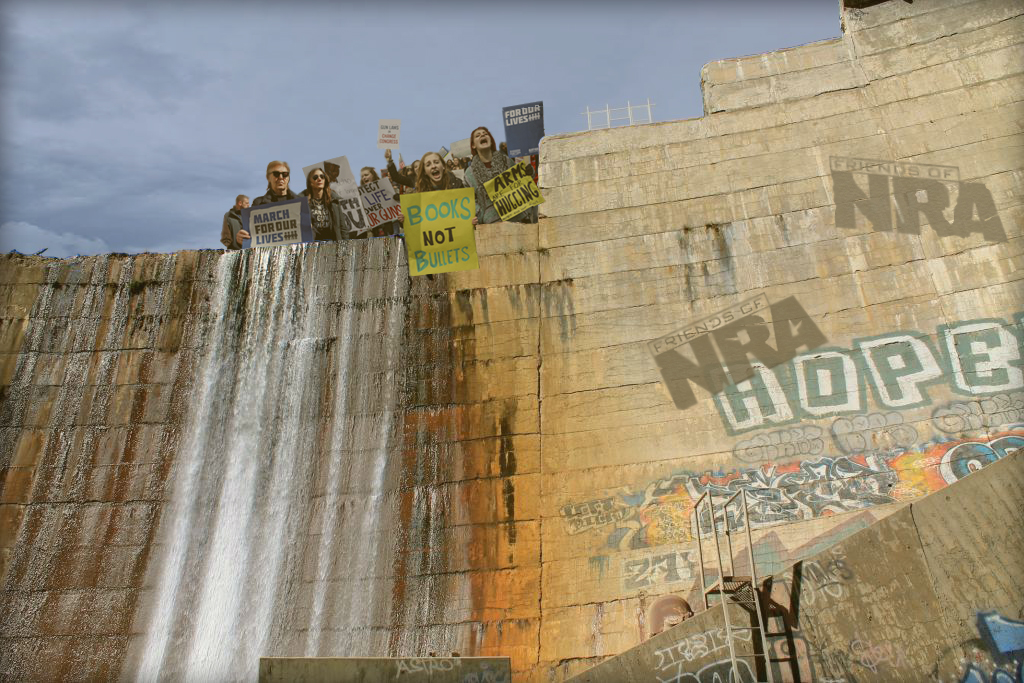
The Parkland Pivot
![]() By Frank F Islam & Ed Crego, March 30, 2018
By Frank F Islam & Ed Crego, March 30, 2018
The Washington D.C. March for Our Lives is over. Does the beat go on? Will this fledgling movement continue and have a lasting impact resulting in new gun laws nationally and in states across this country?
In our opinion, it will. That’s because the tragic shootings in Parkland Florida and the immediate reaction and initiatives launched by the high school students from there represent a pivot point. A pivot point is an area that can be leveraged and addressed effectively in order to effectuate change and achieve positive outcomes.
The activism of the Marjory Stoneman Douglas high school students has galvanized the nation and moved the gun debate toward a tipping point. A tipping point is the period in time in which change will be brought about.
There are a number of factors leading to that assessment. The primary ones are: the high school core group; the social media; the D.C. March; the other marches; the affiliation of gun activists and concerned citizens; the emerging informed discussion on second amendment rights; and, the emergence of guns as a “wedge” or hot button issue.
Let’s examine each of these in turn.
- High school core group. Every successful change effort has a defined leadership core group. Martin Luther King, Jr.’s included eventual civil rights luminaries such as Ralph Abernathy, Jesse Jackson and Congressman John Lewis. The Stoneman Douglas core group includes Cameron Kasky, Emma Gonzalez, and David Hogg. A potential problem for this group is that some of them will be going their separate ways to different colleges in just a few months and they will lose their direct personal connectivity. That is where the next factor comes in.
- Social media. In this 21st century, social media has become a transcendent tool for communicating, coordinating and causing action. Having grown up with this tool, the Stoneman Douglas students used it in a virtually unprecedented way to turn out a massive national protest less than six weeks after the Parkland shootings.
- D.C. March. It is estimated that 800,000+ participated in this march. The speeches and performances from the stage at the march were brilliantly organized and choreographed. The dominant voices were a rainbow coalition of teenage speakers from Parkland and other cities such as South Los Angeles, Chicago, and Washington, D.C., who had lost family due to gun violence. Their speeches were personal, powerful, and passionate. These speakers were joined by well-known performers such as Andra Day, Demi Lovato and Vic Mensa, whose songs reinforced the words of the speakers and provided more emotional glue to bring everyone at the march and those watching it together.
- Other Marches. In addition to the D.C. march, there were more than 800 other marches across the United States, and in other places around the globe. Hundreds of thousands of students and adults were mobilized to participate in those marches. They will be a resource and an army of the willing going forward.
- Gun Activists and Concerned Citizens. The Parkland slaughter and the subsequent national actions provided a rallying point for leaders from other gun tragedies such as Columbine and Sandy Hook, and groups such as the Brady Center to Prevent Gun Violence. It also brought out many moderates and individuals who, in the past, might have been actively involved on other issues, but not on the issue of guns.
- Second Amendment Rights Discussion. For nearly a quarter of a century, the NRA’s leadership has controlled the dialogue on the Second Amendment, misinforming the public and its members that the amendment provides virtually unrestricted gun rights. The truth is that the amendment was established for one reason and one reason only, and that was to protect an individual’s right to have a gun to serve as part of a state’s militia. This new spotlight on the amendment is providing an opportunity to educate the American public in general and to change its opinion on the exact nature of this right.
- Guns as a “Wedge” or Hot Button Issue. As research has shown, one of the reasons that past shootings have not escalated the national debate on gun control and gun rights is that the issue really matters for many NRA members, but it has not mattered nearly as much for the average citizen. The extensive media coverage on the topic from a variety of perspectives is making it more top-of-mind for all. As importantly, the intense focus of the Stoneman Douglas students from the platform at the March for Lives rally on getting out the vote on a moral basis against those elected officials supported by the NRA is making it a wedge or hot button issue — at least for the elections this November.
One of the signs that we saw at the D.C. March said “This is not a moment it is a movement.” We both agree and disagree with what was on that sign.
The March for Our Lives and the hundreds of other marches nationwide was a moment. It was pivot point moment. It was also the starting line for the movement for new, stricter and more rational gun laws. The finish line will be the passage of those laws.
That will undoubtedly take time. But there is momentum now. By seizing that momentum, students, concerned citizens and NRA members who are so inclined can work together to make our schools and country a safer place for all.


